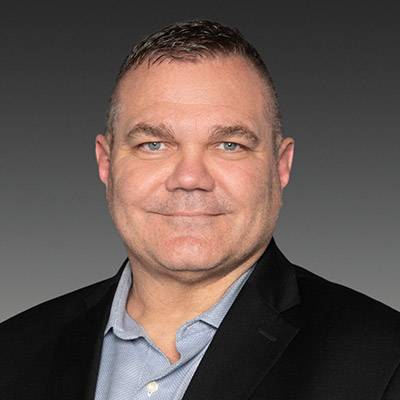- Solutions
- Solutions
- Home Health
- Hospice
- Life Plan Community
- Palliative Care
- Private Duty
- Senior Living
- Skilled Nursing
- Skilled Nursing
- Skilled Nursing Software
- Advanced Insights
- Customer relationship management
- Data and analytics
- Financial & operations management
- Marketing
- Nutrition management
- Referral management
- Regulatory compliance
- Retail management
- Resident engagement
- Revenue cycle management
- Skilled nursing interoperability
- Partners
- Blogs
- Resources
- About
- User Conference

Preparing for a home health survey: Part 1
CMS expects home health providers to have substantial and continued compliance with Medicare Conditions of Participation. This includes an ongoing expectation to take the initiative and responsibility for continuously monitoring their own performance to sustain compliance. These expectations can be complicated and time-consuming for an already overworked staff.
That’s why it’s important for home health providers to be in a consistent state of survey readiness as part of their general operational plan. In this blog, we explore the seven steps that can help home health organizations achieve CMS survey preparedness.
Step 1: Identify key leaders and owners to guide planning
The first step toward preparedness is identifying your Core Survey Response Team. Survey readiness involves significant planning — which is why it’s important to choose staff on all levels, including key leadership as well as field and office staff to help with the following core functional areas:
- Organization and maintenance of survey documents
- Policies and procedures
- Patient safety and emergency preparedness plan (EPP)
- Personnel records, required education and competencies
- Data management, QAPI plan and infection control program
- Clinical care, home visits, field supervision and tracer audits
- Office environment and communications
The survey lead is a critical role of the response team. This role is the key contact for the surveyors. The survey lead guides the response team activities, responds to requests for documentation, and all hard copies given to the surveyors come through the survey lead, who keeps a copy or record of every document given to the surveyors. The survey lead should be knowledgeable about the operations, organized, cool under pressure, and able to effectively lead others. Natural choices for this role are often the administrator/director, quality manager or clinical manager.
Beyond this lead role, it’s also important to identify key leadership or resource owners for each core functional area and audit system.
Step 2: Remember that the best offense is a great defense
Help your team understand and organize survey documents by assigning roles to those who will be involved with the survey process. This team should know where each document is located and/or how it can be accessed — whether stored centrally in hard copy or electronic format or with a master index library to identify the location of each document. It’s also wise to have an identified “owner” responsible for reviewing and maintaining the survey document library on a scheduled basis.
Some common survey documents that might be reviewed or requested during any phase of a survey include:
- Unduplicated admissions report
- Active patients report that identifies SOC/episode dates, primary diagnosis and disciplines provided; some surveyors may also request identification of payor
- Discharged patients with discharge reason for last 12 months
- Active employees (including contracted staff) with titles and DOH
- List or schedule of patients scheduled to be seen for home visits during survey
- State license (if applicable), insurance coverage and surety bond
- CLIA Certificate of Waiver
- Copy of 855A
- Complaint log and documentation of complaints received, investigated and resolved
- Mission statement and organizational charts
- Your most recent strategic plan, program evaluation, annual operating budget, capital expenditure plan, and most recent external review of financial statements
- List of governing body membership, inclusive of positions on board, annual conflict of interest statements, governing body bylaws and minutes of governing body
- Contract list with review dates and copies of all contracts
- Copies of marketing brochures and promotional materials
- Admission packets
- OASIS validation reports and Casper Reports
- QAPI program plans and Performance Improvement Projects (PIPs)
- Injection control plan
- Evidence and supporting documentation of clinical record review for the last 12 months
- Meeting minutes from any and all regulatory/policy required committees
- Staff education and competencies
- Emergency preparedness plan (EPP)
- Policies and procedures
Step 3: Understand and organize home health policies and procedures
Policy review is not only an important component of survey preparedness, but also a critical administrative activity. The purpose of policies and procedures is to provide standardization in daily operational and clinical activities, helping assure local, state, federal, accreditation and organizational requirements are understood and followed.
A great best practice to incorporate into policy review that helps promote a consistent state of survey-readiness is to create a “Top 25 Hot List,” inclusive of common policies requested during surveys and policies that relate to agency-known challenge areas (as identified within your QAPI Program).
When devising your initial Top 25 Hot List as part of your policy review, a great place to start is utilizing the Medicare home health CoPs as a crosswalk for key focus areas to assess your policy. Actual titles of policies vary by organization, and some organizational policy may be organized and/or titled based on accreditation standards.
Anticipate that policies related to Level I and II standards may be requested, such as:
- Patient rights
- Comprehensive assessment of patients
- Care planning, coordination, quality of care
- QAPI
- Skilled professional services
- Home health aide services
- Organization and administration of services
- Clinical records
When performing the crosswalk, think about known challenge areas already identified for your agency from past surveys and high-risk, high-volume areas identified within your QAPI program that are unique to your agency.
Step 4: Review and test the emergency preparedness plan (EPP)
Compliance with the standard for emergency preparedness requires providers to:
- Conduct a (all hazards-based) risk assessment
- Develop an emergency preparedness plan
- Develop policies and procedures
- Develop communication plans
- Provide training and testing
A key goal of emergency preparedness is to promote predicable staff behavior during an emergency. Agencies should have a system in place to review and update the plan at least annually, and it should be inclusive of regulatory and policy requirements for training and testing to promote compliance.
The goals of the EPP are to:
- Establish and maintain an emergency preparedness program to address both medical and non-medical needs
- Ensure the safety of both staff and patients
- Operate within a larger emergency management system by where government agencies and healthcare providers work collaboratively, responding timely in an organized and effective manner
- Assure continuity of services to patients both during and after an emergency
- Promote predictable staff behavior in the event of an emergency
Step 5: Personnel records, education and competencies
Home health organizations should have a system in place to audit personnel records for all regulatory, accreditation, state, and organizational policy required components.
Recommendations for management of personnel records:
- Assure a personnel record is created for each employee at the time of hire and have a specific table of contents for what should be included.
- Access to records should be limited to a single “owner” or department, whose authorization must be gained before anyone is permitted to view a personnel record.
- Agencies should maintain two separate files for each active employee — an administrative file and a confidential employee file that contains all private medical information.
- I-9 Forms should not be kept within individual personnel records and should be stored within a centralized location/separate file.
- Verify that you are following your organization’s policy, as record retention rules can differ by state.
- A quarterly audit schedule is best practice to promote efficient operations and a consistent state of survey readiness.
Step 6: Build a data-driven QAPI program
CMS expects a robust, data-driven QAPI program that continually evaluates and improves agency care for all patients, with oversight from the agency’s governing body to make sure the QAPI program:
- Reflects the complexity of the organization and its services and involves all agency services (including those provided under contract/arrangement).
- Focuses on indicators related to improved outcomes, including the use of emergent care and hospital admission.
- Takes actions to address agency performance across spectrum of care, inclusive of prevention/reduction of medical errors.
- The agency maintains documentary evidence of its QAPI program and is able to demonstrate its operation to CMS surveyors.
QAPI-related CoPs are organized into five standards:
- Program scope: The agency is required to include (but not limited to) use of objective measures to demonstrate improved performance, measuring, analyzing, tracking quality indicators, inclusive of adverse events and other indicators of performance so that processes, services and operations can effectively be assessed.
- Program data: The agency is required to use quality indicator data, including measures derived from OASIS (where applicable) and other relevant data and track performance to promote its sustainment over time.
- Program activities: The agency is required to set priorities for performance improvement, consider prevalence and severity of identified problems, and give priority to improvement activities that affect clinical outcomes — focusing on high-risk, high-volume and/or problem-prone areas.
- Performance Improvement Projects (PIPs): The agency is required to conduct PIPs that reflect scope, complexity and past performance of services and operations. These projects must be documented, inclusive of reasons for selecting the project and measurable outcomes achieved.
- Executive responsibilities: The agency’s governing body is responsible to oversee:
- An ongoing program for QAPI and patient safety is defined, implemented and maintained.
- That agency-wide CMS QAPI efforts address priorities to improve quality of care/patient safety, and all improvement actions are evaluated for effectiveness.
- Clear expectations for patient safety are established, implemented and maintained.
- Any findings of fraud, abuse or waste are appropriately addressed.
Step 7: Prepare staff
Agencies should consider developing a “training and testing” component within the survey preparedness plan, much like the required training and testing involved with emergency preparedness.
Train staff on all the survey preparedness steps, practice mock survey activities to make them go through the motions, and keep the office environment organized and neat. This helps to keep everyone involved ready and accountable for their roles.
Recommended mock survey activities include:
- Review/audit QAPI plan and data
- Audit survey documents and ability to access quickly
- Review and test EPP
- Clinical record review/peer review
- Field supervisory visits with tracer audits
- Personnel record audits
- Practice interview questions and test your call trees
Is your home health organization prepared for a survey at a moment’s notice? Connect with us today to learn how MatrixCare tools keep you ready and confident for survey success.
See what MatrixCare can do for you
Brandy Shifteh
Brandy Shifteh, RN, BHSA, MBA, joined MatrixCare in April of 2018 as a Clinical Informatics Business Analyst, where she has been very involved in the development and enhancement of clinical analytics that supports scrubbing of OASIS assessment data, casemix/HIPPS scoring, clinical assessment reviews and coding. In April of 2019, she transitioned into a Regulations Compliance role, where she is responsible for monitoring regulations that impact home health, hospice and private duty home care, to help ensure our solutions support all existing and new regulations. She is very plugged into the regulatory community with relationships at both the state and federal level and serves as an active member on the National Government Services (NGS) Vendor Coalition group, where she provides input on MAC provider education and materials. Brandy is a Registered Nurse and comes to us with over 23 years of operations management experience in the home health, hospice and private duty home care sector, inclusive of accreditation/survey preparedness, compliance and clinical/quality improvement programming. She holds two undergraduate degrees; science and nursing and health services administration; and an MBA in computer information systems (CIS).
Related Posts


See MatrixCare in action
Start by having a call with one of our experts to see our platform in action.
MatrixCare offers industry-leading software solutions. Thousands of facility-based and home-based care organizations trust us to help them improve efficiency and provide exceptional care.
© 2025 MatrixCare is a registered trademark of MatrixCare. All rights reserved.






